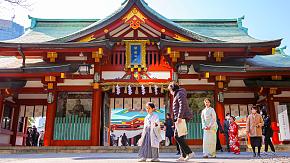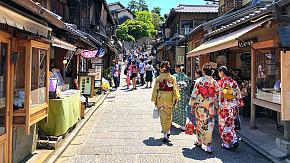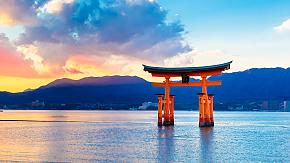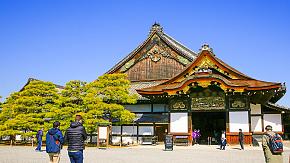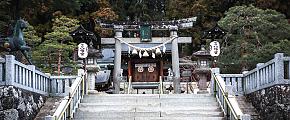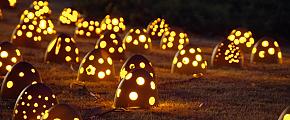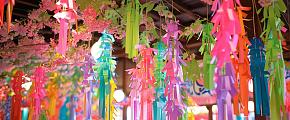7 Unusual Japanese Festivals: Unique & Interesting Experiences
Japan is a land of festivity, with an estimated number of 200,000 festivals held in a year. Whenever you visit this amazing country, you'll find something being celebrated somewhere. For example, the most common summer fireworks festival with parades, or some that are quite unique and unexpected. Here is a list of the 7 most peculiar festivals (matsuri) in Japan, hope these unusual Japanese festivals give you some inspiration for planning your fun and exciting Japan tour.
Baby Crying Festival (Naki Sumo Matsuri)
For most people, crying babies can be annoying, let alone enjoyable. But each year at Sensoji Temple in Tokyo, local parents bring their infants to participate in a crying contest, hoping to drive away demons and ensure their children grow up happy and healthy.
Origin
This centuries-old tradition is said to have originated from the bizarre saying "Naku ko wa sodatsu", which means "Crying babies grow fast". Another reason for this weird festival is the belief that crying loudly helps to scare away demons that would cause harm. Although neither of these works, locals still let their babies cry on this special day.
What You Can Expect
During this weird Japanese festival, parents hand their babies over to sumo wrestlers who will try their best to make the babies cry. Various methods are used to make the babies cry, including pulling faces, making noises, and jiggling the babies. Two babies compete in a short match, and the baby who cries fastest, longest, and loudest is declared the winner. Wrestlers lift the crying baby higher to amplify the blessing.
Belly Button Festival (Hokkai Heso Matsuri)
Located in the heart of Hokkaido, Forano is not only a lovely town known for its lavender fields and ski experience, but also home to a fascinating summer event - the Belly Button Festival.
Origin
Unlike many other Japanese festivals, the special Belly Button Matsuri is a modern invention first celebrated in 1969. Created for fun and to foster community among the sparsely populated residents of Furano, the festival derives its name from the town's central location in Hokkaido and features belly button-themed dances.
What You Can Expect
The two-day celebration features a variety of activities, but the highlight is the belly button dance competition. Thousands of dancers, adorned with their bellies painted as mustachioed clowns, animals, and Japanese characters, compete for prizes.
Visitors from abroad can also apply to participate in the belly button dance free of charge. Dress in the special outfit provided by the local committee, then draw a funny face on your belly and cover your face with a straw hat or something similar. It is time to join the dance.
Cursing Festival (Akutai Matsuri)
The Japanese are usually known for their politeness, but at this weird festival held on Mount Atago in Ibaraki, it is quite interesting to find crowds of locals swearing at cuss words. This is the Akutai Matsuri, on this special day, people are encouraged to cuss.
Origin
This unusual Japanese festival is said to have begun two hundred years ago during the Edo period. The workers in the garment industry, most of whom were women, were stressed out, and longed for a break from the fatiguing task of making kimonos by hand. Thus, they found a way to release their stress-cursing.
What You Can Expect
On the day of the festival, hundreds of people make the 40-minute trek to Atago Shrine. As they make their way to the shrine, they swear at 13 priests walking ahead of them disguised as Tengu, a disruptive demon with a big nose.
The most popular curses are "bakayaro" (idiot) and "konoyaro" (bastard). Before reaching the Atago Shrine, the Tengus will stop at 16 smaller shrines to make their offerings, while the crowds continue to curse and try to take the offerings. Those who receive the offerings are blessed with good fortune.
Laughing Festival (Warai Matsuri / Nyu Matsuri)
Laughter is the best medicine. The locals in Hidakagawa have known this for 200 years. They have an annual laughing festival to cheer up a sad deity to bring them good luck.
Origin
According to legend, a goddess named Niutsuhime no Mikoto was ridiculed by the other gods for oversleeping and arriving late to a meeting. Saddened, she locked herself in the Nyu Shrine. The villagers, wanting to lift her spirits, gathered around the shrine and began to laugh. Their laughter transformed her sorrow into joy, and she eventually agreed to come out.
What You Can Expect
A parade led by the festival leader, called the Suzu Furi (Bell Jingler), marks the beginning of the day-long celebration. Dressed in a clown-like costume, holding a bell in his right hand and a treasure box in the left, the Suzu Furi leads the mikoshi (a portable shrine), dancers, and other participants to the Nyu Shrine, all of whom are shouting "warae, warae" (laugh, laugh). When they arrive at the shrine, they all laugh in unison.
Try-Before-You-Die Festival (Shukatsu Festa)
For most people, there is a natural fear of death, and some even avoid talking about it. However, in Japan, an aging society, more people are coming to accept death as a natural part of life. They even hold a festival called Shukatsu, meaning "preparing for death," reflecting their openness to talking about the end of life.
Origin
This weird festival in Japan was initially promoted by funeral parlors, as Japan's aging population became a growing concern. However, it's not just the elderly participating in planning their perfect farewell; many young people are also interested in learning about what happens after death.
What You Can Expect
During this unusual festival, participants can sample their own funerals, preparing to say their last goodbye. For example, they can
- Try out funeral garments
- Lie down in the coffin
- Personalize burial attire
- Take funeral portraits
- Learn what to do with their belongings (e.g, jewels, bags, clothing)
- Learn how to write ending notes
The Penis Festival (Kanamara Matsuri)
This unusual Japanese festival, also known as the "Festival of the Steel Phallus", the Penis Matsuri takes place every spring in Kawasaki, a city located between Tokyo and Yokohama.
Origin
It is a long-standing Japanese festival dating back to the seventeenth century. Legend has it that a demon with sharp teeth was in love with a woman who did not like him at all. Jealous of the men who won her love, the demon hid inside her vagina and bit off the penis of every man she slept with. Distraught, the woman asked a blacksmith for help. Finally, the blacksmith made a steel penis that broke the demon's teeth, which enabled the woman to live a normal life.
To honor this miraculous steel penis, people built a shrine named Kanamara Shrine. Since then, the shrine has been frequently worshipped by people who wish to have good health, fertility, and happiness. Today, this unique festival welcomes visitors of all kinds, including LGBT people, offering a chance to celebrate diversity, inclusion, and sex positivity.
What You Can Expect
At the entrance to Kanamara Shrine, you'll see people lining up to pray, all enjoying penis-shaped sweets. In the streets of Kawasaki, men, women, and children dressed up in traditional costumes carry floats and "mikoshis" (portable shrines).
There are three mikoshis you can't miss. Kanamara Fune Mikoshi, a traditional style float housing a large steel penis sculpture; Big Kanamara Mikoshi, housing a large penis sculpture made of wood; and Elizabeth float, a two-meter high pink phallus carried by the local drag queen club. This may seem like a bit of sensory overload, but that's what makes this weird festival so much fun.
The Naked Man Festival (Hadaka Matsuri)
This is one of the craziest festivals you can ever find in the whole of Japan. On one of the coldest nights of winter, some 10,000 men wearing nothing but a thin loincloth gather around Saidai-ji in Okayama, waiting for the priest to toss off sacred sticks called shingi. Those who get the sacred sticks are called lucky men and are blessed with a year of happiness.
Origin
Some people believe that the festival was born in Saidai-ji around five hundred years ago. Worshippers of the shrine competed to get paper charms from the priest at the end of the year because they believed good things would happen to them if they were lucky to receive one. Later, the priest found that paper charms were easily destroyed as the crowd all tried to catch them. As a result, they were replaced by sticks made of wood and bundles of willow that were more durable.
Another legend says that being naked can ward off evil forces and misfortune. So the villagers would choose a "lucky" man, shin otoko, to take all the bad luck. After walking naked through the crowd, he needed to find his way back to the shrine with all the bad luck, troubles, and illnesses of the villagers.
What You Can Expect
In the afternoon, groups of men dressed in loincloths jump into an icy pool to purify themselves. Then, at midnight, the lights of the Saidai-ji are turned off and the loincloth-clad men push each other in the freezing temperatures for more than an hour, competing for the lucky sticks thrown by the priest. The winners are those who catch the sticks and push them into a box of rice called masu.
Note
- Participation is restricted to men only. But it would also be fun to be a spectator and enjoy the atmosphere.
- To ensure a good place to watch, you can book a seat in advance.
Partake in the Unusual Japanese Festivals With Odynovo
Don't miss these interesting festival celebrations if you happen to be in Japan. It is a great time to travel like a local and understand its rich culture and tradition! Can't wait to see one of these events for yourself? Why not let one of our Japan travel specialists tailor-make an itinerary to make your dream trip a reality?
Related Posts You May Like
What Our Clients Say
Explore the latest verified reviews of Odynovo's travel services on Tripadvisor, Google, Trustpilot, Product Review and more trusted platforms.

